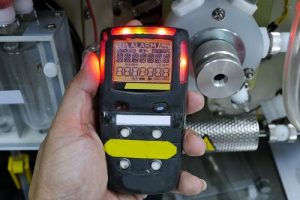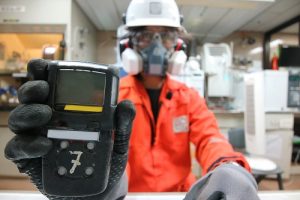If you work in a field in which dangerous gases could pose a potential inhalation, suffocation, or explosion hazard, you most likely put your safety in the hands of a gas detector of some kind. Fixed gas monitors and portable gas leak detectors are critical to maintaining a safe work environment in industries where dangerous gases are commonly involved. Therefore, many industries opt to include both fixed monitors and portable gas detection equipment on their premises to alert employees and members of the public to potentially harmful situations.

However, you don’t have to look too far to find that the sheer array of gas detector types available today is overwhelming if you’re new to the field. Of course, there are two primary types of gas monitors, with both fixed and portable monitors performing different functions. But within those two categories, there is great diversity in the types of detectors needed to provide ample coverage of gas threats and ensure the safety of those on your site. Keep reading to learn more about the different types of gas detectors and their applications.
Two Primary Types of Detectors
As previously mentioned, gas detectors fall into two primary categories. Those categories are fixed monitors and portable monitors. A fixed monitor is typically stationed in a static location where gas is likely to be found. For example, when there are combustion engines operating in enclosed areas, it’d be a good idea to put a fixed gas detector near those engines. Portable gas detectors, as the name would indicate, are carried on the person. Therefore, they move with the user and provide real-time assessments of the presence of gases in the immediate proximity. They can be particularly useful in circumstances where employees may be required to enter areas that aren’t frequently visited but could allow the accumulation of toxic gases or the presence of low-oxygen environments. Because portable gas detectors are worn or carried by the user, they provide immediate assessments that can result in lives saved.
Toxicity Sensors
There are many gases used in fields such as the chemical industry that can be dangerous and even deadly, with only minimal inhalation. Therefore, there’s a need for detectors that can sense the presence of those specific substances and provide employees an alert in time to prevent contact. That role is filled by toxicity sensors, as they sample the air for the presence of known toxic gases and warn people nearby immediately. Even in industries where hazardous chemicals aren’t routinely handled, toxicity detectors can analyze the air for carbon monoxide, a deadly gas that is a common byproduct of incomplete combustion.
LEL Sensors

While inhalation poses a threat to safety in some industries, explosive gases offer another significant concern in the petroleum, manufacturing, and chemical industries. In the presence of such gases, even a small spark from equipment, machinery, or electronics could result in a devastating explosion. Because many of the gases associated with these endeavors can be highly explosive or flammable, detectors are used to warn employees when explosive gases reach safety thresholds at which an explosion could occur. Those detectors feature LEL sensors that can communicate the presence of compounds that are explosive or flammable.
PID Sensors
In some industries, the hazards posed by the presence of multiple gases warrant gas detection equipment that can assess multiple threats at once. For example, in the petroleum industry, there may be inhalation hazards from hydrogen sulfide with concurrent explosion threats from the presence of methane. Therefore, some industries opt for equipment that can warn of multiple threats rather than having multiple detectors that only analyze the environment for a single gas.
If you’re in the market for a fixed gas monitor or portable gas detector, make sure you familiarize yourself with the different types, their respective applications, and their advantages. To learn more about the types of gas detectors and their usage, contact DOD Technologies at (815) 680-6086.







